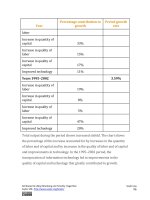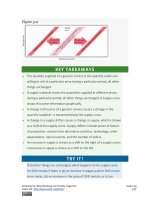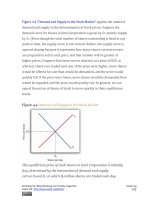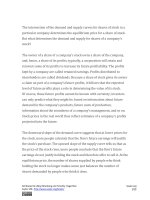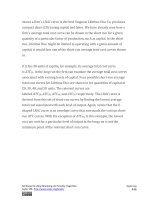Authors libby rittenberg 464
Bạn đang xem bản rút gọn của tài liệu. Xem và tải ngay bản đầy đủ của tài liệu tại đây (410.99 KB, 1 trang )
this chapter we shall see that prices just high enough to induce firms to
continue to produce are precisely what we would expect to prevail in a
competitive market. We will examine a model of how competitive markets
work. Not only does this model help to explain the situation facing farmers,
but it will also help us to understand the determination of price and output
in a wide range of markets. A farm is a firm, and our analysis of such a firm
in a competitive market will give us the tools to analyze the choices of all
firms operating in competitive markets.
We will put the concepts of marginal cost, average variable cost, and
average total cost to work to see how firms in a competitive market
respond to market forces. We will see how firms adjust to changes in
demand and supply in the short run and in the long run. In all of this, we
will be examining how firms use the marginal decision rule.
Figure 9.1
The competitive model introduced in this chapter lies at one end of a
spectrum of market models. At the other end is the monopoly model. It
assumes a market in which there is no competition, a market in which only
a single firm operates. Two models that fall between the extremes of
perfect competition and monopoly are monopolistic competition and
oligopoly.
Attributed to Libby Rittenberg and Timothy Tregarthen
Saylor URL: />
Saylor.org
464
